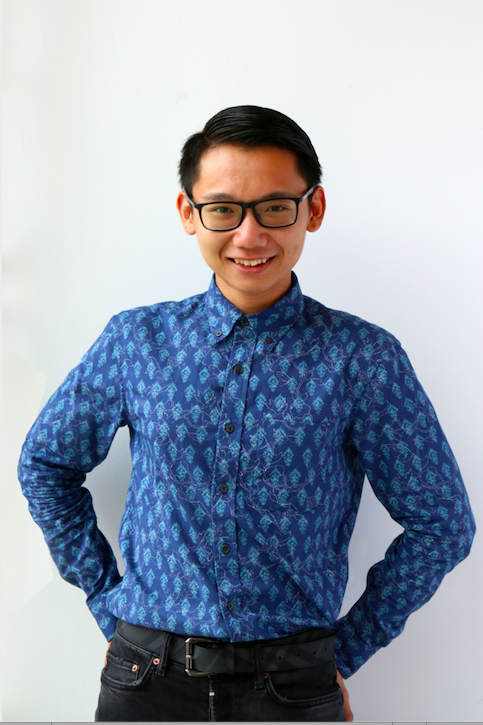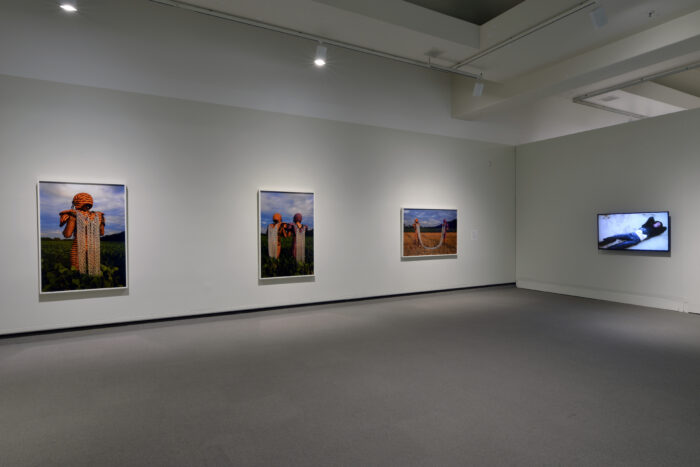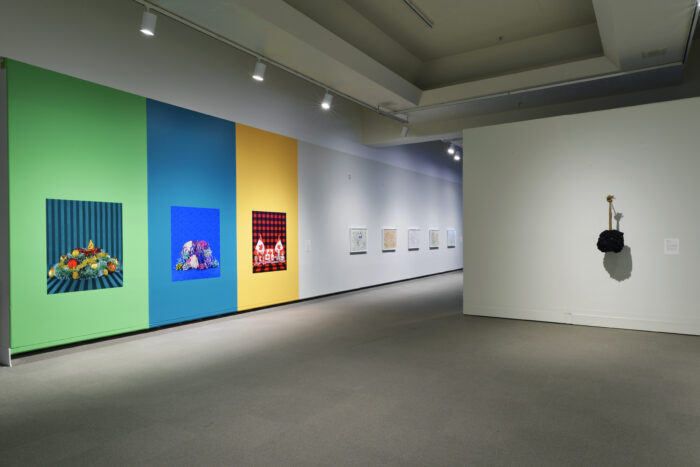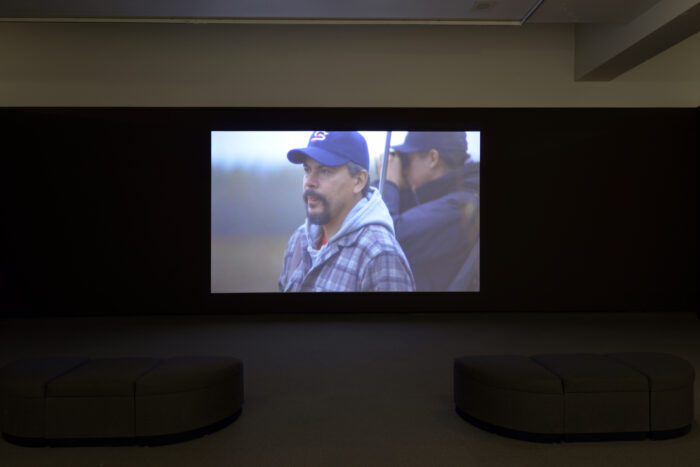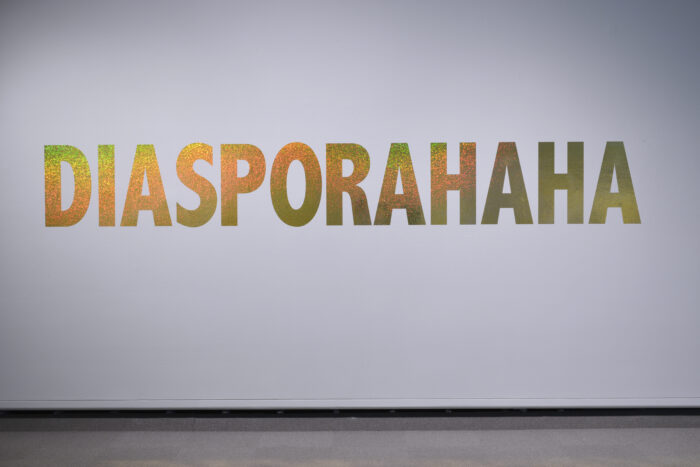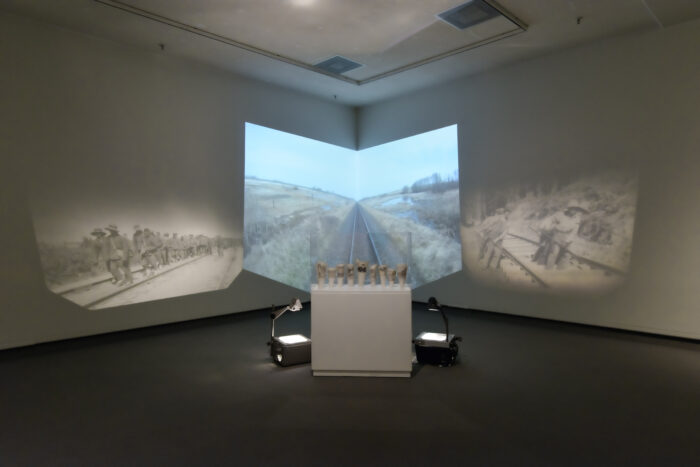Pecha Kucha notes – Tak Pham
On April 22, 2021, we were delighted with our first members’ PechaKucha. Five members were chosen through an open call to discuss their current and recent curatorial projects in the form of PechaKucha presentations: 20 slides are presented while a presenter has 20 seconds to comment on each slide, for a total presentation of 6 minutes and 40 seconds.
In our blog section, you can now follow the selection of three contributions that started with Cécile Bourne-Farell, and continue with a presentation of Tak Pham’s project, “Human Capital.”
Human Capital
by Tak Pham
April 22nd. 2021, Pecha Kucha
My name is Tak Pham, I am currently Assistant Curator at the MacKenzie Art Gallery located in the city of Regina in Canada. In the first Members’ PechaKucha organized by Call for Curators, I presented Human Capital, a group exhibition that featured artworks by seven Canadian artists. The exhibition focused on the history of Canada’s immigration by questioning the motivations behind its many policies, as well as challenging the country’s benevolent international image.
Canada, like most Western nations, has a long history of immigration campaigns that promise economic prosperity to both the state and the immigrants. As a result, Canadian immigration policies have historically focused on maximizing economic contributions while minimizing disruption to its existing hegemonic population. The current points-based immigration system attempts to provide a non-discriminatory assessment of applicants based on the country’s strategic, economic and geographic focuses. Once inside Canada, new immigrants are expected to boost the country’s economy by producing more for less.
The exhibition opens with a video by Aleesa Cohene. Titled All Right (2003), the video pulls together footage from horror movies, news broadcasts, and training videos for immigration officers. Here, the artist presents how popular and systematic narratives have rendered the mainstream perception of immigration equivalent to the fear of strangers. Next to Cohene’s video is a series of three photographs titled Deeper the Wounded, Deeper the Roots (2019) by Esmaa Mohamoud. Through this series, we seek to recognize the lasting anti-blackness legacy that persists in Canada, despite Canada telling us otherwise. The artist uses the language of metaphor to call out the ongoing exploitation of Black body labor.
*Captation: (R) Esmaa Mohamoud, Deeper the Wounded, Deeper the Roots (1), (2), 3), 2019. Collection of the MacKenzie Art Gallery.
(L) Aleesa Cohene, All Right, 2003. Courtesy of the artist.
In trying to find answers to the question “What else is lost when human potential is measured as units of capital?”, Shellie Zhang’s vinyl triptych, titled Means of Exchange (2019), features an assortment of seasonal objects that are widely available in discount stores and tourist shops. Many of these items come from Yiwu, a manufacturing city in China and a major supplier to dollar stores globally. The work attempts to show how the cost of their labor is just a fraction of the price that we pay for these objects here in the West.
Book/mark (2010) by Chantal Gibson is a commemorative sculpture that marks two key historical moments in 1783: the writing of Book of Negroes, the largest single historical document about Black people in North America up until the end of the eighteenth century; and the arrival of the Black Loyalists in Nova Scotia, the largest single migration of Blacks to Canada. The exhibition also includes two other works from Gibson, The Braided Book: a/Historical In(ter)vention Altered History of Canada (1935), with B/W photo of my mother (Nova Scotia, 1955) included in (missing Black) Loyalist section (2011), and Joan’s History Book: Altered Canada A Nation, 1963 (2016). The pieces are from Gibson’s on-going project that explores the limitation of written word and the verity of recorded history. Gibson’s intervention suggests alternative ways to reading and writing history that would highlight voices that are often lost in mainstream history textbooks.
*Captation: (R) Chantal Gibson, Book/mark, 2010. Courtesy of the artist.
(L) Shellie Zhang, Means of Exchange ($37.89), ($31.94), ($76.30), 2019. Courtesy of the artist.
Modest Livelihood (2012) is a silent film collaboration by Brian Jungen and Duane Linklater. The film follows the two artists on a series of moose-hunting trips in northern British Columbia. The duo is joined by Jungen’s uncle, Elder Jack Askoty, who shares his knowledge of the land with them as the group travel through areas that have been heavily altered by industrialization. Across from the film is a series of drawings by Brian Jungen titled Untitled (2017). These drawings show Jungen exploring his own identity as a queer Indigenous artist within globalized consumerism through imagery he sees in popular culture. With these drawings, Jungen questions whose bodies would receive protection in Canada’s multicultural society.
*Captation: Brian Jungen and Duane Linklater, Modest Livelihood, 2012. Courtesy of Catriona Jeffries and the artist.
In another vinyl work from Zhang, It’s Complicated (2019), we see two words: “diaspora” and “haha.” Like a self-referential joke speaking to both the perception and the experience of many immigrants, the text creates a satirical but critical comparison between the xenophobic notions towards racialized immigrants, and how they themselves cope with the experience.
*Captation: Shellie Zhang, It’s Complicated, 2019. Courtesy of the artist.
Similarly, artist Florence Yee focuses on the experience of Chinese Canadian immigrants. Their work captures the loss in translation within generations of immigrants through their own reflections on their family relationships. In their works Whitewashed (2018) and A Labour of Labour (2018), we can see how the boundary between sentiment and comfort for many immigrants is being challenged by the cynicism of multiculturalism. In Please Reply IV (2020), Yee investigates the ambiguity that immigrants experience under a neoliberal system of globalism, and how that system is displacing their families geographically, while also creating distance between them and their ancestors.
In the back of the exhibition, we have a multi-media installation by Regina-based artist Jeannie Mah. Titled Train: Les Arrivées (2013), the installation speaks to the intertwined histories of Chinese immigrants and the trans-Canada railway. Mah uses images from historical archives and personal collections to highlight not only the history, but also the contribution of Chinese families, including her own in the development of Saskatchewan cities, such as the city of Regina.
*Captation: Jennie Mah, Train: Les Arrivées, 2013. Courtesy of the artist.
The exhibition is also complimented by a screening of Migrant Dreams (2016) by Min-Sook Lee. This is a powerful documentary that tells us of the struggles of migrant agricultural workers under Canada’s Temporary Foreign Worker Program. These workers pay exorbitant fees to work at minimum wage jobs packing fruits and vegetables for Canadians, while they have virtually no access to any support.
Due to language barriers and other urgent needs, voices from new immigrants are still missing in many discourses in Canada. My goal for this project was to speak to these folks on a personal level, and to provide them with some empowerment as I continue to work on these issues. You can learn more about the exhibition here.
Tak Pham
Tak Pham is a Vietnamese art curator and critic. He holds an MFA in Criticism and Curatorial Practices from OCAD University, and a BA Hons. in History and Theory of Architecture from Carleton University. Pham has curated exhibitions, projects, and public programming at public institutions such as OCAD University, Art Gallery of Ontario, Art Toronto, Xpace Cultural Centre, Varley Art Gallery, and festivals like the Images Festival, Nuit Blanche Toronto, and Myseum Toronto, as well as private art consultation projects. His curatorial projects have been featured on Canadian Art, Akimbo, Artoronto.com, Blouin Artinfo, CBC Arts, Cultre Magazine, the Leader Post Regina, the Prairie Dog and NOW Toronto. Pham’s writings and reviews have appeared in ESPACE art actuel, esse arts + opinions, Canadian Art, Hyperallergic, The Senses and Society Journal, and The Dance Current, among others. He was a recipient of OCAD University’s Alumni of Influence Trailblazer award 2020. Pham is currently Assistant Curator at the Mackenzie Art Gallery in Regina, Saskatchewan, Treaty 4 territory, the original lands of the Cree, Ojibwe, Saulteaux, Dakota, Nakota, Lakota, and on the homeland of the Métis Nation.
*Image Captation: Tak Pham © Farihah Shah

